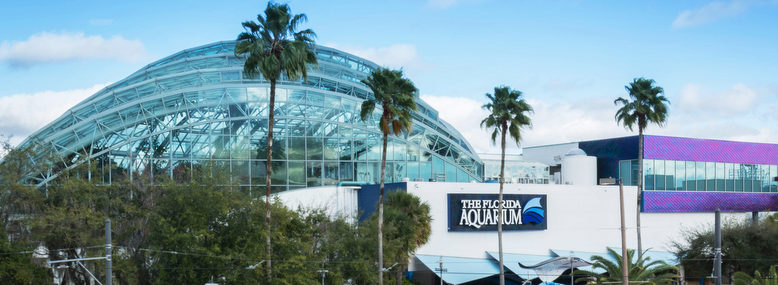A team of Florida Aquarium scientists and divers recently returned after spending 15 days in the Florida Keys for a coral spawn. The team collected 150,000 coral gametes (coral eggs and sperm) during the coral spawn that only happens once a year after a full moon. The team fertilized the eggs and then released thousands back into the wild. The remaining fertilized eggs, or embryos, are being distributed to The Florida Aquarium Center for Conservation, Georgia Aquarium, Mote Marine Laboratory and Aquarium, and Nova Southeastern University to continue research and to grow the coral for a future release.
This comes at a critical time since Florida is in the middle of the largest coral disease outbreak ever recorded, which is rapidly killing 20 different species of coral in the Florida Keys. The staghorn coral species, the primary species that was collected during the coral spawn, is not at immediate threat from the disease. However, it is listed as threatened under the Endangered Species Act.
Scientists are trying to figure out what’s causing the outbreak and how to stop it. The outbreak makes the work on reproducing corals even more important because it’s necessary to raise their offspring.
“This work is more critical than ever due to the current disease outbreak in the Florida Keys,” said Keri O’Neil, Coral Nursery Manager for The Florida Aquarium. “These laboratory fertilization techniques can be used to save many coral species in the future.”
O’Neil believes practicing the techniques could restock Florida’s damaged reefs with the corals raised in the laboratory at The Florida Aquarium’s Center for Conservation in Apollo Beach. The lab already houses corals collected from last year’s spawn that will be celebrating their one year birthday and will be released back into the ocean later this year.
The gametes were collected from the Coral Restoration Foundation Coral Nursery, with the work conducted by permit from the Florida Keys National Marine Sanctuary. The team worked with several partners including the Keys Marine Laboratory, Coral Restoration Foundation, Nova Southeastern University, University of Florida, South-East Zoo Alliance for Reproduction and Conservation (SEZARC), Mote Marine Laboratory and Aquarium, Sea World, Georgia Aquarium, and Horniman Museum and Gardens.
“I think it’s a really good example of the strengths in partnerships that The Florida Aquarium has formed to help save coral reefs,” said O’Neil.
Additional information on Coral:
- Corals are not plants, they’re actually animals.
- Called “the rainforests of the sea,” coral reefs only take up about 2% of the ocean floor, but host about 25% of all ocean species.
- Coral reefs grow very slowly, at an average rate of just two centimeters per year.
- Each individual coral is known as a polyp.
- The annual synchronized spawning of corals is a spectacular event.
- This mass reproduction only happens once a year.
- It involves colonies and species of coral polyps simultaneously releasing tiny egg and sperm bundles into the water.
For the latest on theme parks, attractions and more across the region, be sure to follow Touring Central Florida on twitter @TourCentralFL, @androckb, @Emmet_TCF, @JacobTouringCe1, and give our facebook page a like.

